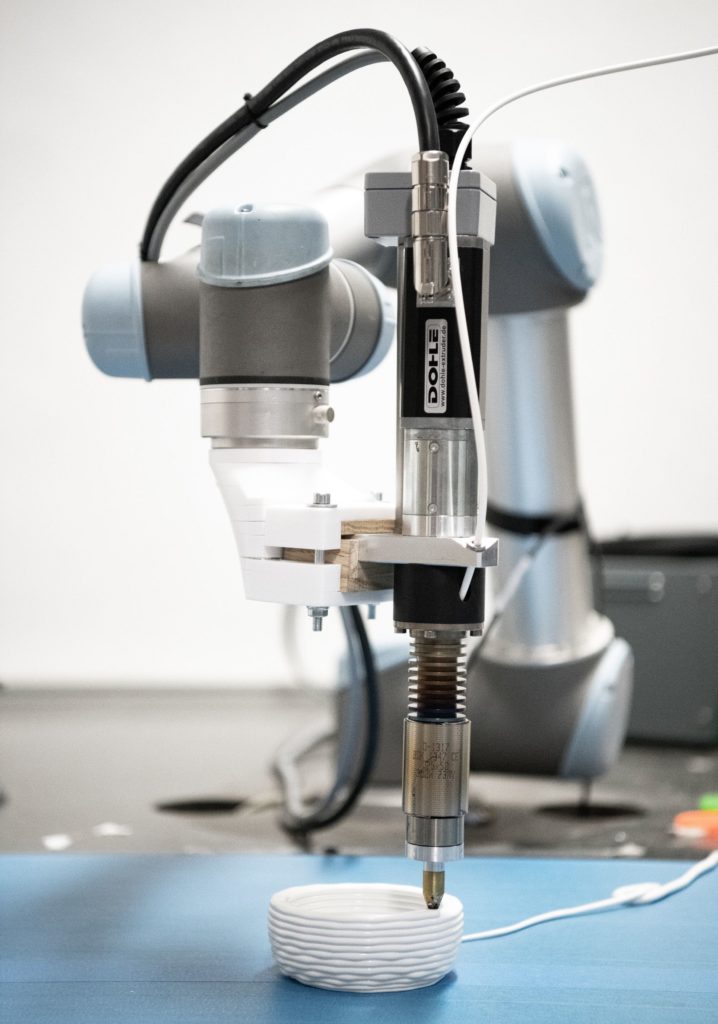
„3D Printing offers capabilities that traditional machines don`t. One of the top motivators for implementing 3D printing is the ability to mass produce customized products. While customization with traditional machines might require new cast or mold with each new product, 3D printers can manufacture each product differently depending on the program its given – significantly increasing efficiency and decreasing cost.“
When Henry Ford revolutionized the automobile industry with the invention of the assembly line in 1908, he could hardly have guessed what influence he would have on the development of mass production in the entire industry. With the help of assembly line production, many identical parts could be produced cheaply and quickly and workflows could be optimized. When in the early 1970s the first commercial robot „Unimate“ from Unimation Inc. was introduced into the production process of General Motors, the first step towards automated mass production was taken. In most cases, they still carry out repetitive processes that were taken from humans because they were too heavy or dangerous or could be carried out more cost-efficiently with the help of robots. Charles and Ray Eames also attached great importance to the greatest possible variety of colours when developing their Fiberglass Chairs at the beginning of the 20th century, in order to achieve larger sales markets through individualisation.
Until the 1950s, fibreglass, which was one of the few materials suitable for the mass production of their chairs, had only been processed colourless. The two architects developed a colour-adjustable seat shell that was suitable for series production of the chair. This became one of the best-known furniture classics of the 20th century due to its adaptability to a wide variety of existing and new rooms. A further step in the direction of the worldwide phenomenon of mass customization was the Nokia 5510, released in March 1998 by the Finnish company Nokia. This mobile phone was characterized by a replaceable back, the „Xpress-On Cover“. The cover was available in many different colors and Nokia’s advertising message was „Make the phone as unique as you are“. With 39 million units sold and 160 million Nokia 3210 devices sold, the idea was confirmed. Each person wanted to feel unique, show others their individuality and this should be projected on all situations in life – shoes, laptops and cars. One could say that mass customization reached the masses in the mobile market. The smartphone has now replaced the old mobile phones and in addition to different colors and sleeves, each smartphone is now particularly adaptable by millions of available apps according to their own needs. Personalization has migrated from the outside to the inside.
The car manufacturer Opel has sold over 100,000 Adam models, demonstrating that its nearly 82,000 variants for the interior and 61,000 for the exterior offer almost 4 billion different combinations, how important individuality is to consumers and how important it is to make the car manufacturer profitable again by 2020. What would happen, however, if not only the color or a certain equipment, but also entire individualized objects, such as pieces of furniture, could be produced simply, inexpensively and in the shortest possible time, and then also be completely recyclable? These possibilities have been available since the last decade through parametric design and the tools of digital fabrication.
A robot arm can be controlled more easily than ever with attachments such as an extruder thanks to digital design tools as a tool that is not to be used for mass production but for individualized mass production. With parametric design tools like Grasshopper for Rhino, complex designs from architects and designers can be easily translated into machine codes. They offer thus the condition, not only products in different colors, but whole individualisierte product series to manufacture. This further development towards the internal, structural personalization of a superficially already mass-individualized product could be called Mass Customization 2.0. This Bachelor’s thesis deals with new possibilities of digital design and deals in particular with the topic of 3D printing and robotics as a tool of Mass Customization 2.0. As an example, a process is developed to use a smart, continuous printing line to print furniture in a spiral printing process. The basics developed during the research should serve as a basis for further knowledge in the field of architecture.
– Sources in PDF version –
© 2019 LAYERCHAIR.com Moritz Wesseler ALL Rights Reserved
Music: Bensound.com